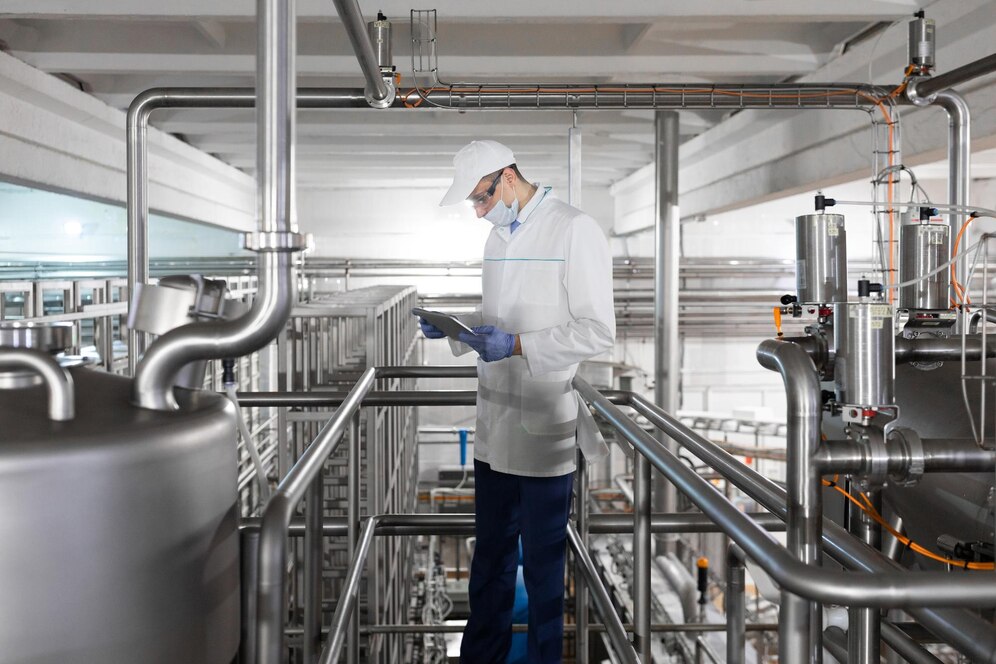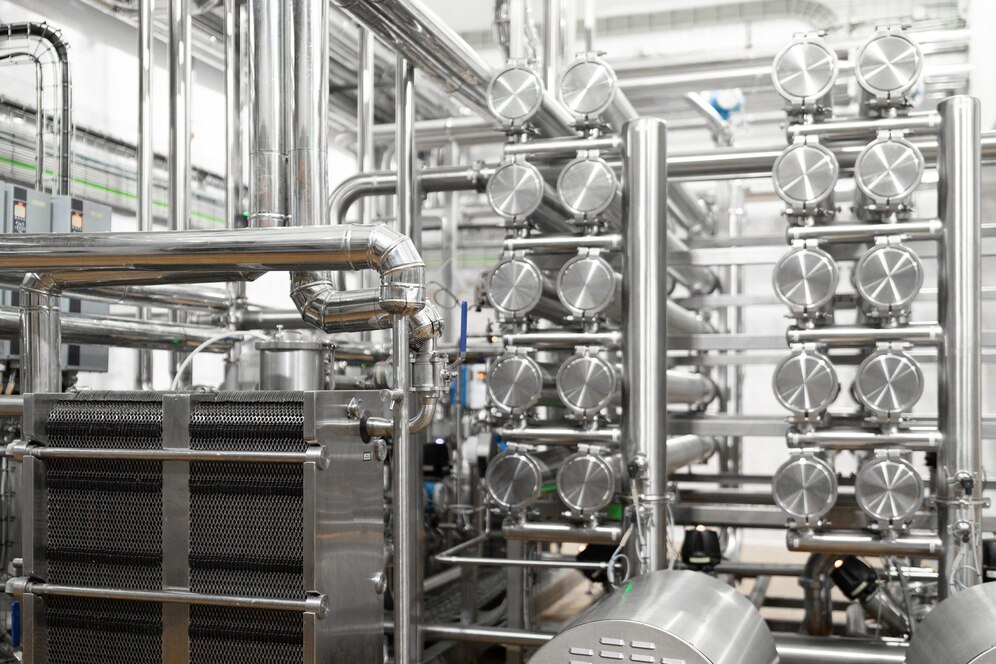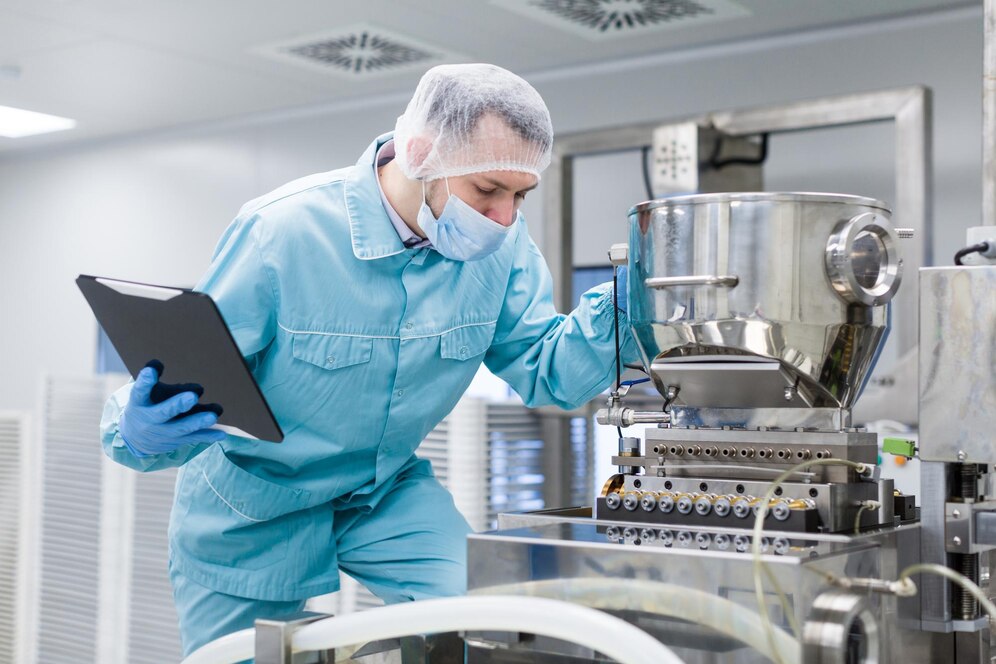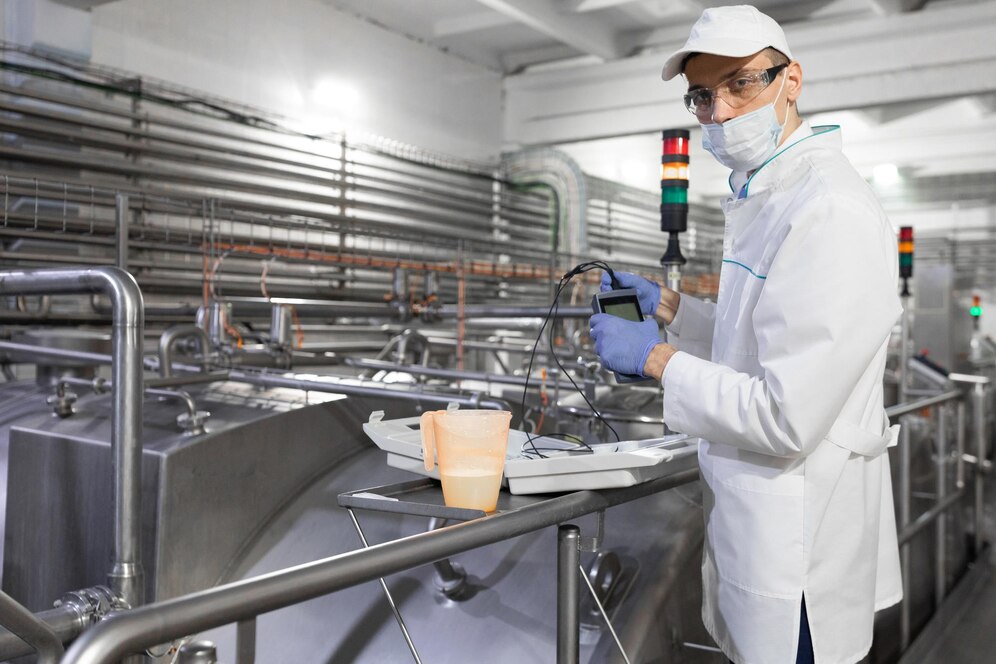How Do Shutter Valves Facilitate Cleaning In Food Manufacturing?
by Abdul Aziz Mondal Uncategorized Published on: 06 February 2024 Last Updated on: 18 October 2024

In the food manufacturing process, maintaining equipment hygiene and functionality is crucial to ensuring food safety and production efficiency. The adoption of shutter valves for highly-viscous fluids has become a game-changer in the industry, particularly when handling. These valves are designed to enable quick and effective maintenance and cleaning, thus significantly reducing the downtime that can affect a food processing line.
Shutter valves’ distinctive construction allows for complete sealing when closed and unrestricted flow when open, which is essential for the consistent processing of viscous materials in the food industry. Their ease of maintenance and cleaning ensures that your equipment remains in top condition, mitigating risks of contamination and helping you comply with strict food safety standards. The straightforward design also simplifies the otherwise complex process of maintaining equipment that comes into direct contact with food products.
Key Takeaways
Shutter valves enhance hygiene and reduce maintenance time.
Designed specifically for viscous fluids, they maintain product quality.
Their simplicity supports stringent food safety protocols.
Understanding Shutter Valves In Food Manufacturing

Shutter valves are crucial components in the food manufacturing process, providing both cleanliness and efficiency. They are designed to meet the strict sanitary standards required for food production while simplifying maintenance and cleaning procedures.
Design Advantages For Hygiene And Maintenance
Shutter valves are favored by food manufacturers for their hygienic design, which minimizes the risk of contamination. Their design allows for the valves to be easily disassembled without the need for specialized tools, which is a significant advantage when thorough cleaning is required. Unlike traditional valves, they do not necessitate lubricant that can harbor bacteria, thereby maintaining the integrity of food products. The smooth, polished surfaces of hygienic valves, especially those in shutter valves, prevent food particles from lodging in crevices, making them optimal for clean-in-place (CIP) systems.
Ease of Disassembly: Simplifies preventive maintenance and cleaning.
No Lubricant Needed: Reduces the potential for bacterial growth.
Designed for CIP: Enables effective in-line cleaning without disassembly, increasing operational efficiency.
Maintenance And Cleaning Processes
When it comes to maintenance and cleaning, shutter valves excel at reducing downtime. Their design allows for quick access to internal components, simplifying both preventive maintenance and corrective procedures. Since proactive maintenance is essential in food manufacturing, the ability to perform it swiftly minimizes operational disruptions.
Compliance with food safety standards requires meticulous cleaning protocols, and shutter valves support these protocols with their compatibility with automated cleaning technologies like Alfa Laval’s ThinkTop automation system. This level of automation not only assures a consistent cleaning process but also contributes to a safer food manufacturing environment by limiting human error.
Quick Access: Facilitates faster and more efficient maintenance and cleaning.
Automated Cleaning: Leverages cutting-edge technologies to ensure thorough sanitation and compliance.
Using shutter valves specifically designed for the food manufacturing industry can significantly enhance your facility’s hygiene, maintenance efficiency, and compliance with food safety regulations.
Mitigating Risks And Optimizing Operations

In the food and beverage industry, effective maintenance of shutter valves is pivotal for ensuring operational efficiency and minimizing risks. You’ll learn how these valves prevent contamination and enable you to manage maintenance challenges, ultimately influencing food safety and operational costs.
Read Also: Impossible Foods Secures More Funding, Partners with OSI Group to Scale
Preventing Contamination And Ensuring Safety
Shutter valves in your facility play a critical role by providing a reliable seal that helps prevent contamination. During production, contamination is a continuous risk, and the consequences of a product recall due to contamination are far-reaching, affecting consumer trust and operational costs. By incorporating best practices in your maintenance regimen, including regular cleaning and inspection of shutter valves, you adhere to HACCP guidelines and prepare effectively for audits.
Maintenance experts recommend establishing a schedule to replace shutter valves and their components before failure occurs, thus avoiding temporary fixes that may compromise product integrity.
Inventory Management: Keep a log of spare parts and replacement parts to reduce both repair costs and downtime.
Food Safety: Implement and follow stringent procedures for valve maintenance to support food safety initiatives.
Dealing With Unexpected Maintenance Challenges

Despite the best maintenance strategies, unexpected maintenance challenges may arise, especially in the wake of events like the COVID-19 pandemic, which has disrupted supply chains globally. Your ability to respond to these challenges by swiftly executing repairs and sourcing necessary parts conserves both time and money while maintaining operational efficiency.
Repair vs. Replacement: Evaluate the cost-effectiveness of repairs against replacing parts or equipment to manage operational costs.
Expert Consultation: In challenging situations, consult with maintenance experts to determine the most efficient course of action.
By emphasizing regular maintenance and being prepared to respond to unexpected situations, you ensure your shutter valves aid in the uptime of your operations and help to enforce food safety—a testament to your facility’s commitment to best practices and operational excellence.
Conclusion
Shutter valves are crucial for maintaining a hygienic environment in your food manufacturing processes. They provide an efficient, sealable solution that simplifies cleaning and reduces downtime. Your use of shutter valves supports adherence to stringent sanitation protocols, ensuring consistent production of safe, high-quality food products.
Read Also:



































































































